This was published 8 years ago
Philadelphia, USA: The US city with extraordinary art (it's not New York)
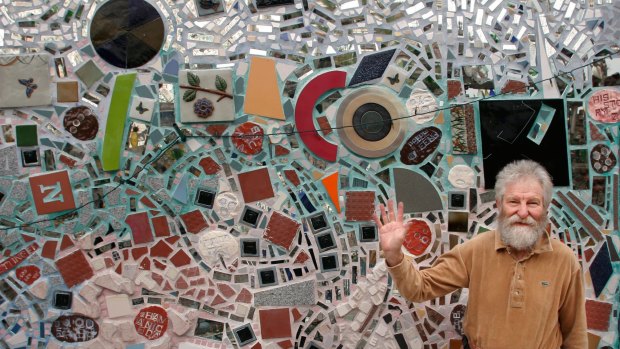
Isaiah Zagar's Magic Garden.Credit: Alamy
A silver organ hangs against the wood of Verizon Hall like a cameo brooch. Members of the orchestra gather on the stage beneath, flicking out coat tails on sharp tuxedos, or adjusting hemlines and fiddling with sheet music. The audience is silent, watchful. And then the conductor steps forward, followed by a soloist named Sarah Chang. When she begins to play, her music is so powerful it seems to flow through her body like an electrical current.
I am sitting in the audience, row Q, seat 119. I am so dazzled by the spectacle that I must immediately adjust my expectations for the whole weekend. Philadelphia sits between New York and Washington DC on the east coast of America, and is often overlooked as travellers shuttle via train between those two imposing cities. I thought I would stop for a few days, poke around a bit, see if there was anything much to report. I expected a nice diversion, perhaps a bit of eating. I did not expect this.
Chang contorts her face in a mask of musical ecstasy. Her fingers shoot at light-speed across the violin. She moves like a dancer in a shimmering purple dress. And then she stops, spent, and the audience jumps to its feet in rapturous applause. It is difficult not to see the performance as a kind of rebuke, as though the orchestra has thrown down a challenge: "You thought Philadelphia had nothing but cream cheese? Well, check out our art."
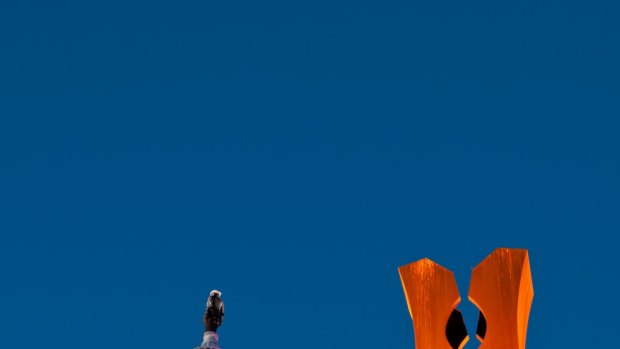
Philadelphia's Clothespin statue and Old City Hall. Credit: Getty Images
Philadelphia, in truth, has extraordinary art. Some of the best art in the country, ranging from exquisite collections to avant-garde murals. It's possible to get a sense of this simply by walking through Centre City, which is the name given to the business district and surrounding neighbourhoods. A long tradition of investing in civic culture has resulted in 51 public sculptures being installed throughout the area, including a 13-metre-high clothespin by Claes Oldenburg, and the world-famous Love sculpture by Robert Indiana. There is even an audio app that will narrate you through the collection all the way to Fairmount Park.
"I think of the city as a labyrinthine museum," Isaiah Zagar, a local artist, told a magazine recently. He is absolutely correct.
I stumble over Zagar myself almost accidentally one evening, when I'm walking down a street and notice an apartment building entirely covered with a mosaic of tiles and mirror shards. Zagar began working on the structure 14 years ago, gluing together statues, wine bottles, crockery, and bicycle wheels until the whole mess resembled a coral reef, which he then titled the Magic Garden. "What got me started is a mental breakdown," he tells me, standing outside. "Yeah, if you can make heads or tails of this" – he waves his hand, trailing off, momentarily perplexed by his own creation.
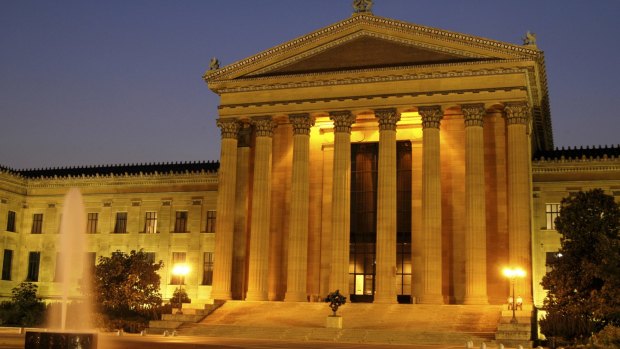
The Philadelphia Museum of Art houses more than 300,000 works spanning 2000 years. Its steps were made famous in the Rocky movies. Credit: B Krist/ GPTMC
It's possible to stumble over finds like this one, but most of the major art in Philadelphia is conveniently collected on Benjamin Franklin Parkway. This mile-long stretch is the location of the Rodin Museum, for instance, which contains the largest assemblage of Auguste Rodin sculptures outside of Paris, donated to the city by a cinema magnate named Jules Mastbaum in the 1920s.
At the end of the parkway, a long staircase made famous by Rocky Balboa leads to the Philadelphia Museum of Art. Founded in 1876, on the occasion of the first world's fair to held in America, it is a remarkable Greek revival building that resembles a temple. "This museum is considered a collection of collections," Norman Keyes, the museum's director of communications, explains when I visit. Sprawling galleries are dedicated to arms and armour, Chinese ceramics, oriental carpets, and modern art. Van Gogh's sunflowers are here, along with installations by Duchamp and a painted ceiling by Sol LeWitt.
The original curators knew that American audiences would understand artifacts better in their original settings, so I find myself walking through a room from the Palace of Duke Zhao; past an entire Tokyo teahouse; and into the Grand Salon from the Chateau de Draveil, transported intact from France. "You can put things in a spare white gallery under glass," Keyes continues, "or you can put them in a context like that, and your experience of the same object would be remarkably different."
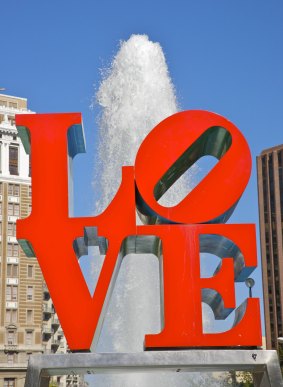
Robert Indiana's LOVE sculpture.Credit: Getty Images
As afternoon bleeds into evening, music drifts into the galleries from the Great Stair Hall. When I follow the sound, I find groups of people with wine and cheese, listening to a jazz band for Art After 5, a weekly cabaret event.
That the Philadelphia Museum of Art is not even the city's most notable institution is really saying something, but there you have it. Just down the road, the Barnes Foundation takes the crown for spectacle and strange audacity. Without question, the Barnes is one of the most memorable museums I've ever seen.
Like MONA in Hobart, the Barnes constitutes one man's uncompromising vision: 69 Cezannes, 181 Renoirs, 59 Matisses, and countless other paintings hung tightly together on walls lacking a single explanatory label. Dr. Albert C. Barnes spent his life amassing one of the world's most valuable collections of post-impressionist and early modern art. Then he arranged the pictures how he wanted them, and wrote a will forbidding anybody to move anything. The collection was moved, controversially, in 2012, but the new building recreates to one-tenth of a millimetre Barnes' original arrangement, which he saw as his way of educating people to think for themselves.
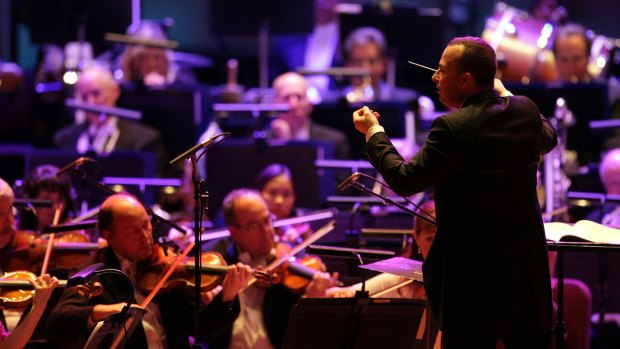
The Philadelphia Orchestra in performance. Credit: Getty Images
"Put out of your mind a painting, a plaque, a painting, a plaque," Penny Hansen, a docent, tells me. "There's none of that here."
And indeed, the pieces of art are left to speak for themselves, arranged because they complement each other in colour or shape, or because Barnes saw how Amedeo Modigliani echoed African sculptures in his portraits and wanted his audience to see that as well. Wandering these galleries is a hallucinatory experience; there is something deliciously iconoclastic about seeing a priceless Picasso stuffed in the corner because that's where Barnes wanted it to go.
(The collection, by the way, has been estimated to be worth more than $34 billion, which is probably more than several waterfront suburbs of Sydney.)
Philadelphia also happens to be the mural capital of the world. There are thousands scattered throughout the city, often where you least expect them. I decide to finish my surprising visit with a tour of a 50-mural series designed to be seen from a moving train. This is called the Love Letter Tour, because these particular murals, curated by a graffiti artist Steve Power, are love letters "from a guy to a girl, from an artist to his hometown, and from local residents to their neighbourhood of West Philadelphia", the MuralArts website explains.
One morning I join a small group of people at the Pennsylvania Academy of the Fine Arts, and then follow Al Haynes, an amiable guide, onto the public subway system. "Put yourself in a position so you can see," Haynes says, directing us to sit on the right of the train. And then we are shooting out of a tunnel, rising above a children's hospital and life insurance building on elevated tracks. The murals come fast, painted on crumbling rooftops: giant slogans bursting with colour and pride in a neighbourhood far rougher and less prosperous than the Centre City we've left behind.
"Holler and hear my heartbeat," reads one of the murals.
Another says: "I want you like coffee. I need you like juice. I won't put you on the side like bacon. You can have my over easy."
Who said art needed to be serious all the time?
TRIP NOTES
MORE INFORMATION
See discoverphl.com.
GETTING THERE
Several airlines offer flights from Sydney and Melbourne to Philadelphia, including Qantas, via Dallas-Fort Worth. See qantas.com. Philadelphia is also conveniently reached from New York or Washington DC on the Amtrak train service. See www.amtrak.com.
STAYING THERE
The recently refurbished Westin Philadelphia is well-positioned on Rittenhouse Square, walking distance to many galleries and museums. Rooms range from approximately $300 a night. See www.starwoodhotels.com/westin/philadelphia.
SEE + DO
The Philadelphia Orchestra regularly performs in the cello-shaped Verizon Hall at the Kimmel Centre. A full calendar and tickets are available at www.kimmelcenter.org.
An interpretative audio app covering Philadelphia's extensive public art is offered by the Association for Public Art and available for free download. See www.museumwithoutwallsaudio.org.
Daily entry into the Philadelphia Museum of Art also covers the Rodin Museum, and costs $27 an adult. Art After 5 is held every Friday night between 5-8.45pm. See www.philamuseum.org.
The Barnes Foundation offers timed tickets, so it's worth booking ahead to ensure entry. Tickets can be purchased on-site, online, or by calling 215.278.7200. Prices start at $30 an adult. See www.barnesfoundation.org.
MuralArts offers a variety of mural walking tours, including the Love Letter Train Tour on weekends. See www.muralarts.org.
The writer was a guest of the Philadelphia Convention and Visitors Bureau.
FIVE OTHER REASONS TO VISIT PHILLY
1: Eastern State Penitentiary was the world's first penitentiary, now an eerie ruin where cellblocks are arranged like the spokes of a wheel. See www.easternstate.org.
2: Fairmount Park sprawls over 3700 hectares, making it one of the largest urban park systems in the country. The area around the Philadelphia Museum of Art contains the remains of old waterworks.
3: An American icon of the abolition movement against slavery, the cracked Liberty Bell is on free display at the Liberty Bell Centre.
4: Reading Terminal Market is the best place to go for seafood, cheesesteaks, baked goods, and Amish specialties. See www.readingterminalmarket.org.
5: Cuba Libre, a restaurant and rum bar in Old City, offers appetising Cuban cuisine and a late night Latin dance club on weekends. See www.cubalibrerestaurant.com.
Sign up for the Traveller Deals newsletter
Get exclusive travel deals delivered straight to your inbox. Sign up now.